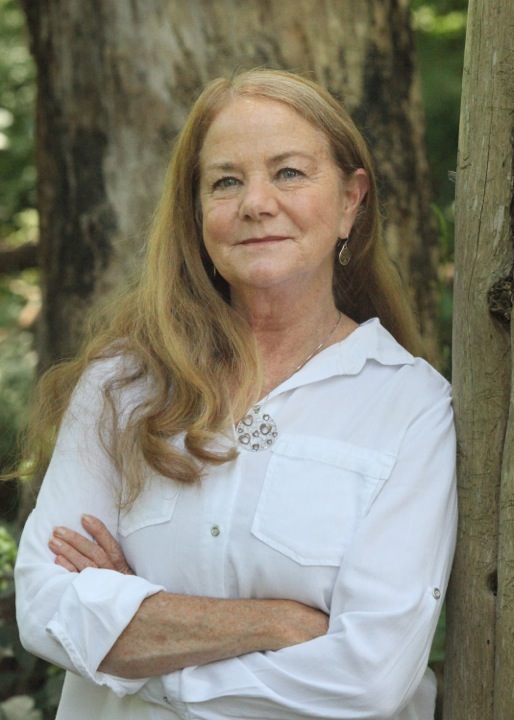Provide a Green Solution
to Health Inequality
A study by Dr. Brian Stone found that Louisville, Kentucky, had the fastest-growing urban heat island in the country. The impact is deadly: heat-related ailments contribute to the deaths of eighty-six Louisville residents each year.
In response, Louisville Metro took Stone’s data, commissioned an Urban Tree Canopy Assessment study to understand where there was a correlation between extreme heat and tree cover, and collaborated with grassroots organizations, business owners, and citizens to tackle the heat-island effect.1
This led to a nature-based solution designed to increase the tree canopy in the city’s most deprived areas, develop community parks, increase wellbeing, and boost health outcomes for its residents.
What Is the Urban Heat-Island Effect?
The “urban heat-island effect” is a growing problem in US cities, where extreme heat kills 1,300 people every year. 2 Urban heat islands occur when cities replace natural land cover with dense concentrations of pavement, buildings, and other surfaces that absorb and retain heat. This effect increases energy costs (e.g., for air conditioning), air-pollution levels, and heat-related illness and mortality.
Overnight, when temperatures usually drop, the built-in structures of the city don’t cool down. This makes the following day even hotter—and the impact even more deadly.
The Urban Heat Island in Louisville
Dr. Stone’s study and the Urban Tree Canopy Assessment revealed serious inequities in the city. The most deprived, primarily Black neighborhoods, had the lowest tree cover and experienced the worst health impacts of extreme heat—including heat stress and heatstroke, as well as cardiac arrest and stroke—particularly in older people with underlying health conditions.

On an infrastructure level, extreme heat disrupts transport, making rail and buses unusable. This is a particular issue in deprived areas where people are more reliant on public transport and less likely to own cars. When transport infrastructure is disrupted, people are forced to walk in hot weather—exacerbating the issue of heat and health.
The correlation between low tree canopy, health outcomes, and inequality was terrifyingly stark.
Lower tree canopy was concentrated in Louisville's poorest, formerly “redlined” neighborhoods where tree cover was around 22 percent and temperatures were up to 10 degrees Fahrenheit (5.6 degrees Celsius) higher than well-vegetated zones. In contrast, wealthier, “greenlined” districts had up to 49 percent tree cover. Life expectancy in low-tree-canopy neighborhoods was around seventy years, compared to eighty-three years in the wealthier east of the city.
Studies show that an expansion of tree canopy in downtown Louisville by 15 percent to 33 percent could reduce estimated heat-related mortality between 5 percent and 28 percent. 3
The city's response to becoming the fastest-growing urban heat island was to invest in building the tree canopy, a nature-based solution to rising temperatures. In response to the Urban Tree Canopy Assessment, it set up a nonprofit organization that would be responsible solely for improving the urban tree canopy: TreesLouisville.
Working Together to Transform Green Space and Public Health
To help determine how and where to increase the tree canopy in Louisville, Dr. Stone’s study assumed a green-area ratio policy, which sets minimum green-cover targets for all residential, commercial, and industrial sites.
Meeting those green-cover targets was the task of TreesLouisville, as well as a second nongovernmental organization (NGO) called Louisville Grows.
Using the data from the Urban Tree Canopy Assessment, TreesLouisville
- worked with the school system (the centrality of schools and the size of the properties offered a huge opportunity to provide natural environments for entire neighborhoods);
- identified local large-property owners in industrialized spaces lacking tree cover, then set up meetings to invite them to grow trees on their sites; and
- collaborated with the Kentucky Transportation Cabinet to plant trees alongside busy roads (helping tackle extreme heat, noise pollution, and air pollution).
Having identified the school system as a great target for tree planting, TreesLouisville approached the Jefferson County Public School System to discuss planting trees on its land.
Jefferson County Public School System was chosen based on three metrics, including
- it covered a large amount of land in Louisville—more than four thousand and fifty acres;
- much of that land lacked tree cover, but was able to support trees; and
- working with schools would promote education about climate resilience in the community.
Louisville Grows
- approached homeowners, inviting them to plant a tree in their gardens; and
- convened tree-planting events, during which volunteers collaborated with community members to create greener and healthier neighborhoods.

Parkland Plaza
The final green intervention in Louisville is Parkland Plaza, an ongoing project in the Parkland district, a primarily Black neighborhood.
The city was awarded a $42,000 grant from Partners for Places to transform a historic part of the area.
Center for Neighborhoods set up a series of public meetings to consult on what a public area could look like while ensuring any plans would also reduce urban heat.
The ambition is to
- increase the tree canopy, including by planting trees to shade a community garden that already exists on-site;
- develop a parking lot using cool pavements; and
- ensure any building is completed with natural materials.
All three measures—trees, cool pavements, and the use of natural materials—are designed to eliminate the urban heat-island effect to the greatest extent possible.
“We All Know About the People-Plant Connection”
Two methods ensured the success of Louisville’s extreme-heat intervention.
Data: The Urban Tree Canopy Assessment gave the city the data to identify which communities lacked tree cover, so it could target the solution to those who needed it most. The city is now targeting commercial property owners.
Community engagement: For Parkland Plaza in particular, members of the Parkland Business Development Association talked about the initiative with their customers, neighbors, and friends, encouraging community buy-in and participation through word of mouth.
Since the initiative started, TreesLouisville and Louisville Grows have planted upward of fifteen thousand trees. A city ordinance has been passed protecting trees on private land and setting requirements for the minimum percentage of tree-canopy cover in certain public spaces.
Each additional square meter of tree canopy or grass added across Louisville was found to yield temperature reductions 1.2 times greater than each square meter of other interventions, such as reflective roofing or paving.

